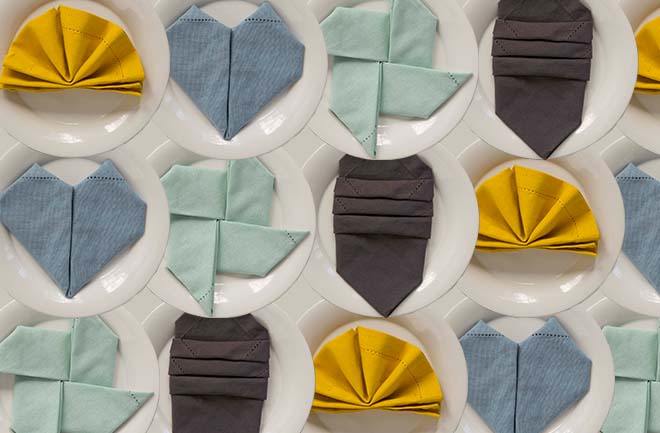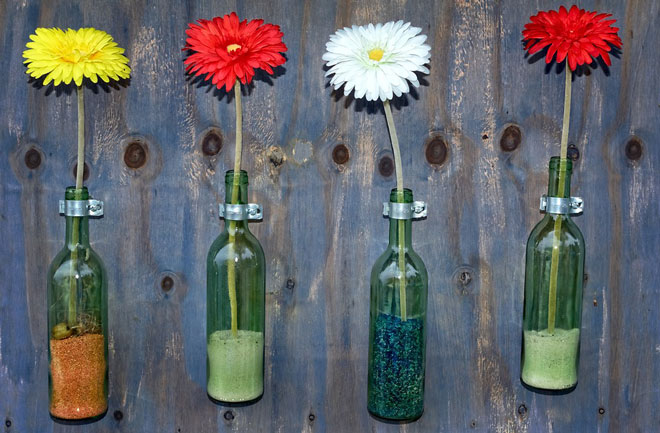The art of paper folding often associated with Japanese culture has long fascinated Westerners – and for good reason. The intricate designs that result look gorgeous and are often a talking point. Which is why, inspired by one of the real weddings featured in Issue 1-2017, we found four easy origami napkin styles to wow your guests.
What you’ll need
• Square napkins in the colour of your choice
How to do it
For the windmill:
1 Fold all the corners into the centre of the napkin.
2 Fold the bottom of the napkin upwards to meet the middle then do the same for the top.
3 Fold the left side to the middle and repeat this on the right, ensuring both sides are equal.
4 Turn the napkin over nd pull out the corners from the inside until all four corners are exposed. Repeat for as many napkins as required.
For the heart:
1 Fold both sides into the middle, ensuring they are equal. Then fold in half lengthways.
2 Fold the top of the napkin down towards the bottom. The take the top and fold it sideways, creating a 90-degree line. Repeat on the opposite side by folding the bottom towards the top.
3 Turn the napkin over then take the top right corner and tuck it in. Repeat this on the left then turn over to see the end result. Repeat for as many napkins as required.
For the three-fold:
1 Fold the napkin in half from side to side, then fold from top to bottom to create a smaller square.
2 Using the top piece of fabric, roll the right corner into a tube. Do the same with the next two pieces of fabric on the right.
3 Turn the napkin so the tubes of fabric are horizontal then turn over the napkin and fold the right and left corners into the middle until they meet. Turn over once more to see the end result. Repeat for as many napkins as required.
For the sitting fan:
1 Fold the napkin in half then fold the bottom about 1 cm upwards.
2 Fold the same section for 1 cm towards the alternate side of the napkin. Continue folding for 1 cm on alternate sides until you have about 3 cm left.
3 Fold the napkin in half with the folded pieces horizontal. Then fold the leftover fabric into the centre and pull out all the folds into a fan. Repeat for as many napkins as required.
Find this DIY and more in Issue 1-2017, on sale now.
Text Robyn Lane
Styling Francoise Jeanne de Villiers
Photography Kendall-Leigh Nash/HMimages.co.za









































